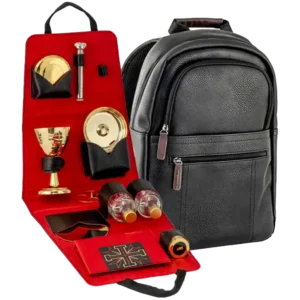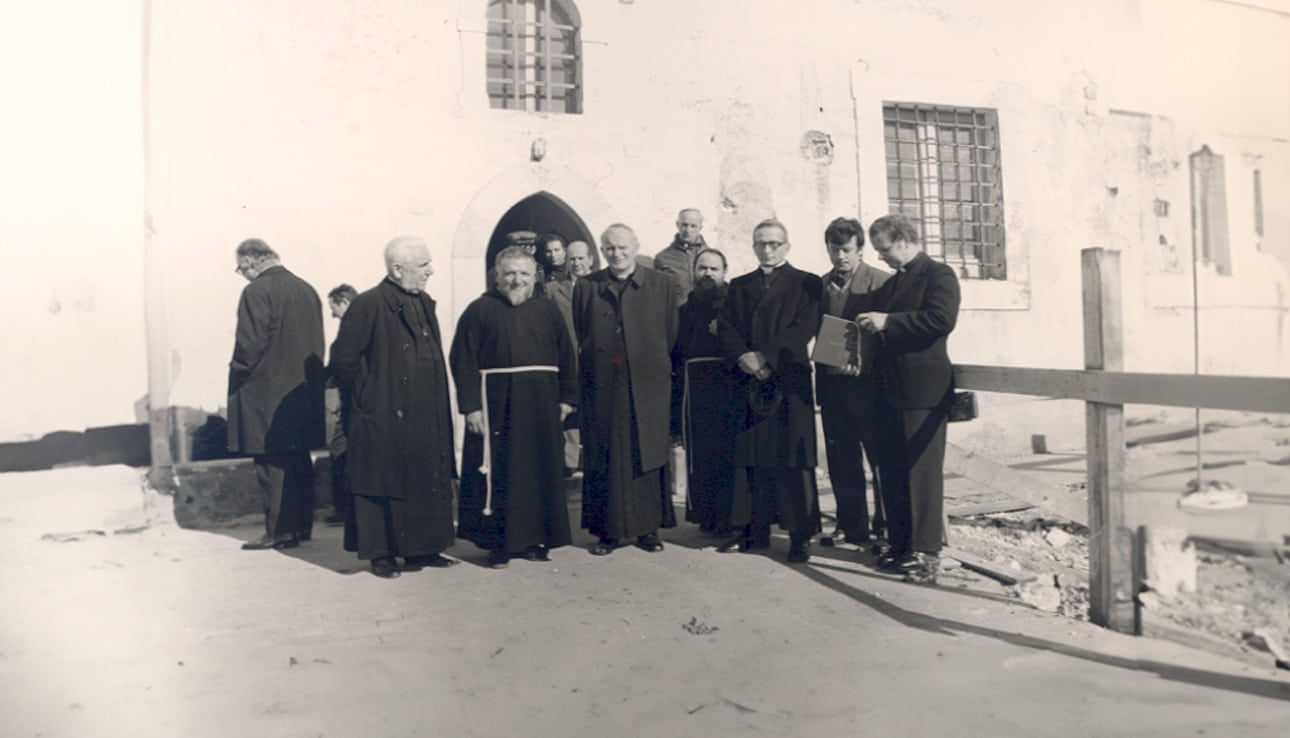
Padre Pio, Italian Capuchin, (1887-1968), canonized in 2002, in a multitudinous ceremony by St. John Paul II under the name of St. Pio of PietrelcinaThis holy priest received an extraordinary spiritual gift to serve all the men and women of his time. This gift marked his life, filling it with suffering, not only with the physical pain caused by his stigmata, but also with moral and spiritual suffering, a consequence of those who considered him a madman or a swindler.
The reality is that this saint helped thousands of people to return to the faith, to convert and come closer to God. Padre Pio performed amazing healings. And predictions difficult to contrast, such as the one made to Karol Wojtyla himself, predicting his future papacy. The Frenchman Emanuele Brunatto credited that same gift of prophecy that allowed him to find out from time to time what was going to happen. It is Jesus," explained the Padre Pio- who sometimes lets me read his personal notebook...".
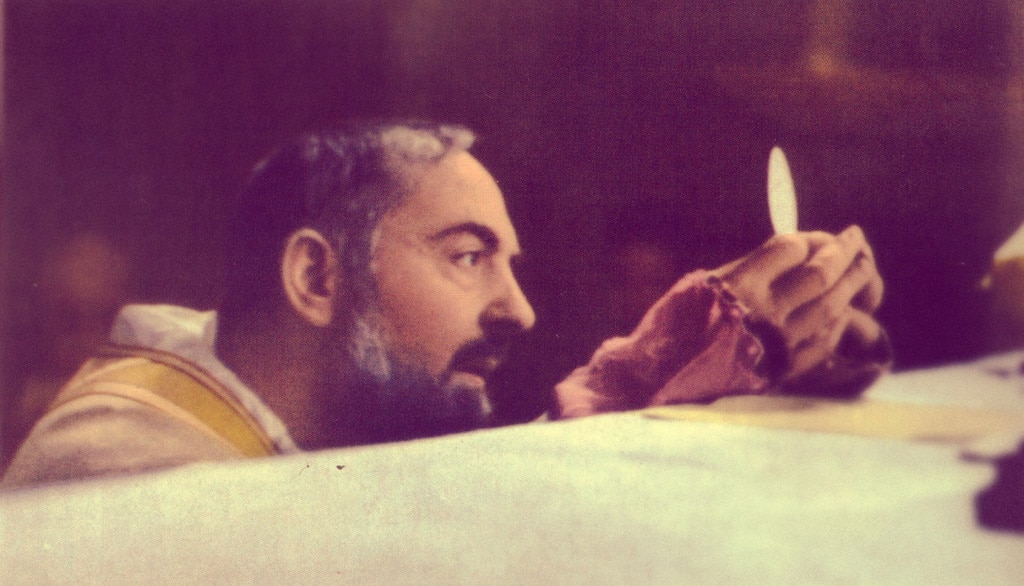
At the Mass of canonization on June 16, 2002 in St. Peter's Square at the Vatican, St. John Paul II affirmed that ".Padre Pio was a generous dispenser of divine mercyHe made himself available to everyone by welcoming them, giving them spiritual direction and especially by administering the sacrament of penance. I too, in my youth, had the privilege of benefiting from his availability to penitents. The ministry of the confessional, which is one of the distinctive features of his apostolate, attracted countless crowds of the faithful to the convent of San Giovanni Rotondo".
The relationship between Padre Pio and St. John Paul II is not only due to the fact that the beatification and canonization ceremonies of the Capuchin friar were held during the Polish pope's pontificate, but also because, in 1948, Karol Wojtyla met Padre Pio at San Giovanni Rotondo.
It was in April 1948 that Karol Wojtyla, a newly ordained priest, decided to meet Padre Pio. "I went to San Giovanni Rotondo to see Padre Pio, to participate in his Mass and, if possible, to go to confession with him."
This first meeting was very important for the future pope. This was reflected years later in a letter he sent in his own handwriting, written in Polish, to the Father Guardian of the convent of San Giovanni Rotondo: "I spoke with him in person and exchanged a few words, it was my first meeting with him and I consider it the most important".
While Padre Pio was celebrating the Eucharist, the young Wojtyla took special notice of the friar's hands, where the stigmata could be seen covered by a black scab. "On the altar of San Giovanni Rotondo the sacrifice of Christ Himself was being fulfilled, and. during confession, Padre Pio offered a clear discernment and simple, addressing the penitent with great love".

The young priest was also interested in Padre Pio's wounds: "The only question I asked him was which wound caused him the most pain. I was convinced it was the one on my heart, but Padre Pio surprised me when he said: 'No, the one that hurts me the most is the one on my back, the one on my right side.
This sixth shoulder injuryas the one Jesus suffered while carrying the cross or the patibulum on the road to Calvary. It was the sore "that hurt the most", because it had festered and had never "been treated by the doctors".
The letter dated November 17, 1962 read: "Venerable Father, I ask you to pray for a forty-year-old mother of four daughters who lives in Krakow, Poland. During the last war she was in the concentration camps in Germany for five years, and is now in grave danger of health, even life, due to cancer.
Pray that God, with the intervention of the Blessed Virgin, will show mercy to her and her family. In Christo obligatissimus, Carolus Wojtyla".
At that time, Monsignor Wojtyla, who was in Rome, received the news of the serious illness of Wanda Poltawska. Convinced that Padre Pio's prayer had a special power before God, he decided to write to him to ask for help and prayers for the woman, mother of four daughters.
This letter came to Padre Pio from Angelo BattistiAngelo, an official of the Vatican Secretariat of State and administrator of the House of the Relief of Suffering. He himself recounts that after reading the contents to him, Padre Pio uttered the famous phrase: "I can't say no to this one!", and added: "Angelo, keep this letter because one day it will be important".
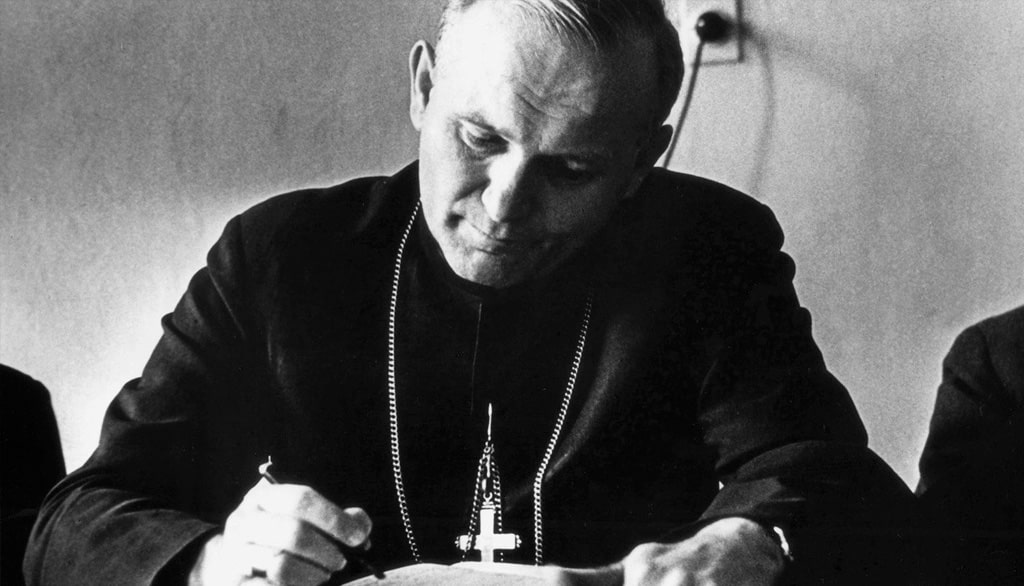
A few days later, the woman underwent a new diagnostic examination which showed that the cancerous tumor had completely disappeared. Eleven days later, John Paul II again wrote her a letter, this time to thank her.
The letter said: "Venerable Father, the woman who lives in Krakow, Poland, mother of 4 girls, was suddenly cured on November 21 before surgery. We give thanks to God and also to you, Venerable Father.
I express my sincere thanks on behalf of the lady, her husband and the whole family. In Christ, Karol Wojtyla, Capitular Bishop of Krakow". On that occasion the friar said: "Praise be to the Lord!
"Look at the fame that Padre Pio has achieved; the followers he has gathered around him from all over the world. But why, because he was a philosopher, because he was a wise man, because he had the means?
Nothing of the sort: because he said Mass humbly, went to confession from morning to night and was, it is difficult to say, a representative sealed with the wounds of Our Lord. A man of prayer and suffering". Pope St. Paul VI, February 1971.
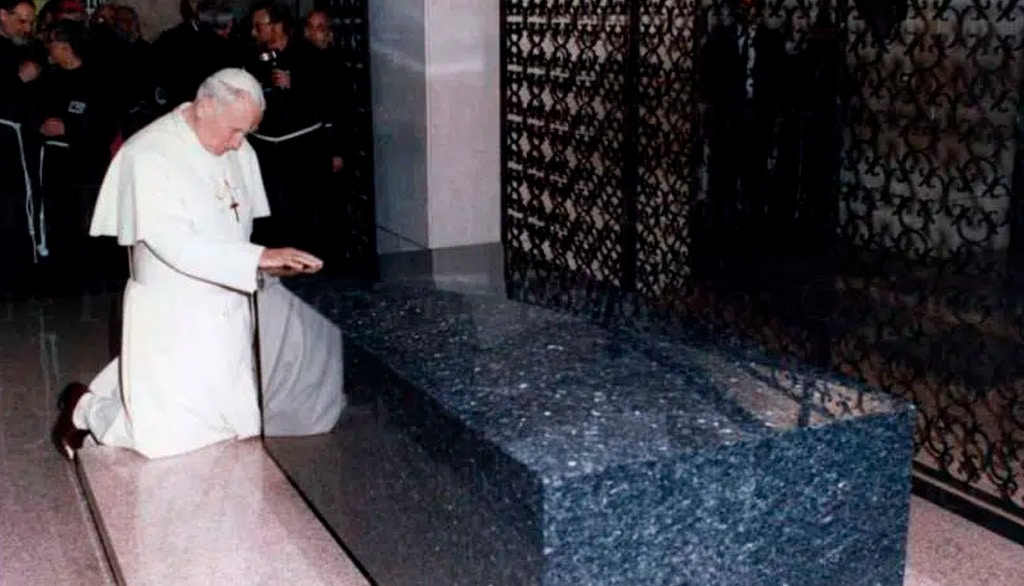
Wojtyla returned to San Giovanni Rotondo on two more occasions. The first, when he was Cardinal of Krakow, in 1974 and the second, when he was already proclaimed Pope, in 1987. On these two trips he visited the mortal remains of Padre Pio and prayed kneeling at the tomb of the Capuchin friar.
In the autumn of 1974, then Cardinal Karol Wojtyla, was back in Rome and, "as the anniversary of his ordination to the priesthood (November 1, 1946) approached, he decided to commemorate the anniversary in San Giovanni Rotondo and celebrate the Mass at the tomb of Padre Pio. Due to a series of vicissitudes (November 1 was particularly rainy) the group composed of Wojtyla, Deskur and six other Polish priests was delayed considerably, arriving in the evening around 9 pm.
Unfortunately Karol Wojtyla could not fulfill his wish to celebrate Mass at Padre Pio's tomb on the day of his ordination to the priesthood. So he did it the next day. Stefano Campanella, director of Padre Pio TV.
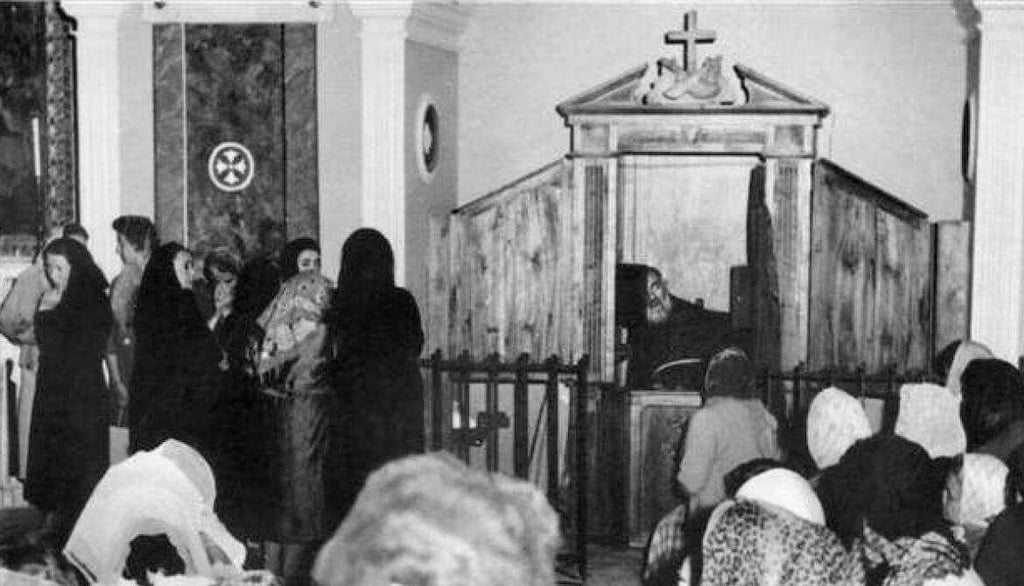
Padre Pio "had a simple and clear discernment and treated the penitent with great love," John Paul II wrote that day in the visitors' book of the convent in San Giovanni Rotondo.
In May 1987, St. John Paul II, now Pope, visited the tomb of Padre Pio on the occasion of the first centenary of his birth.
Before more than 50,000 people, His Holiness proclaimed: "Great is my joy at this meeting, and it is for several reasons. As you know, these places are linked to personal memories, that is, to my visits to Padre Pio during his earthly life, or spiritually after his death, at his tomb.
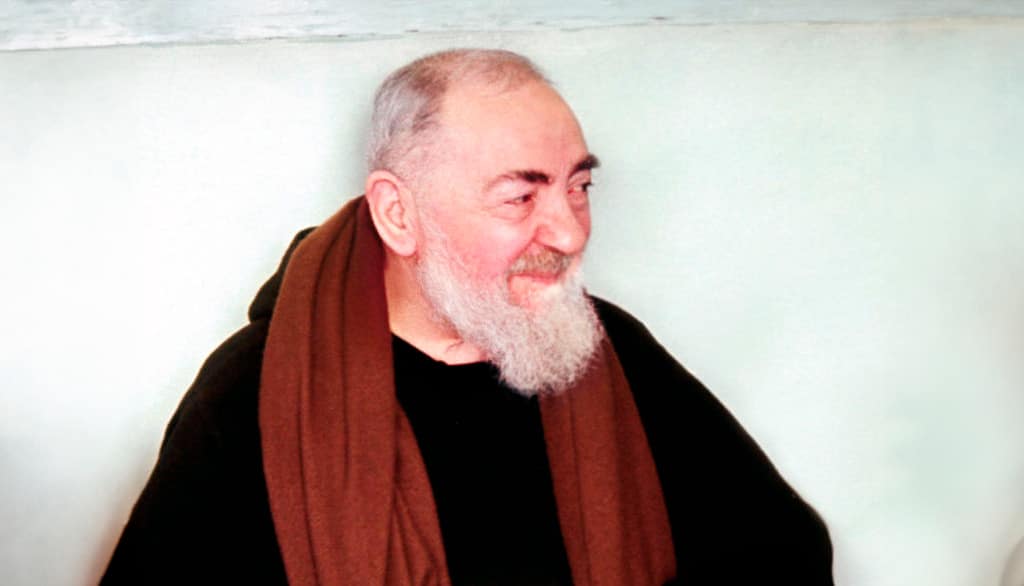
On May 2, 1999, John Paul II beatified the stigmatized friar, and on June 16, 2002, he proclaimed him a saint. On that day, St. John Paul II canonized him under the name of St. Pio of Pietrelcina. In the homily of his sanctification, John Paul recited the prayer he composed for Padre Pio:
"Humble and beloved Padre Pio: Teach us too, we ask you, humility of heart, so that we may be considered among the little ones of the Gospel, to whom the Father has promised to reveal the mysteries of his Kingdom.
Help us to pray without ever tiring, in the certainty that God knows what we need before we ask him for it. Reach out to us with a gaze of faith capable of readily recognizing in the poor and the suffering the very face of Jesus.
Sustain us in the hour of struggle and trial, and if we fall, grant that we may experience the joy of the sacrament of forgiveness. Transmit to us your tender devotion to Mary, Mother of Jesus and our Mother.
Accompany us on our earthly pilgrimage towards the happy homeland, where we too hope to arrive to contemplate eternally the glory of the Father, the Son and the Holy Spirit. Amen.
Bibliography
- La Brújula Cotidiana interviews the director of Padre Pio TV, Stefano Campanella.
- Interview with Polish Archbishop Andrew Maria Deskur, 2004.
- Homily of John Paul II. Mass of Sanctification, 2002.
